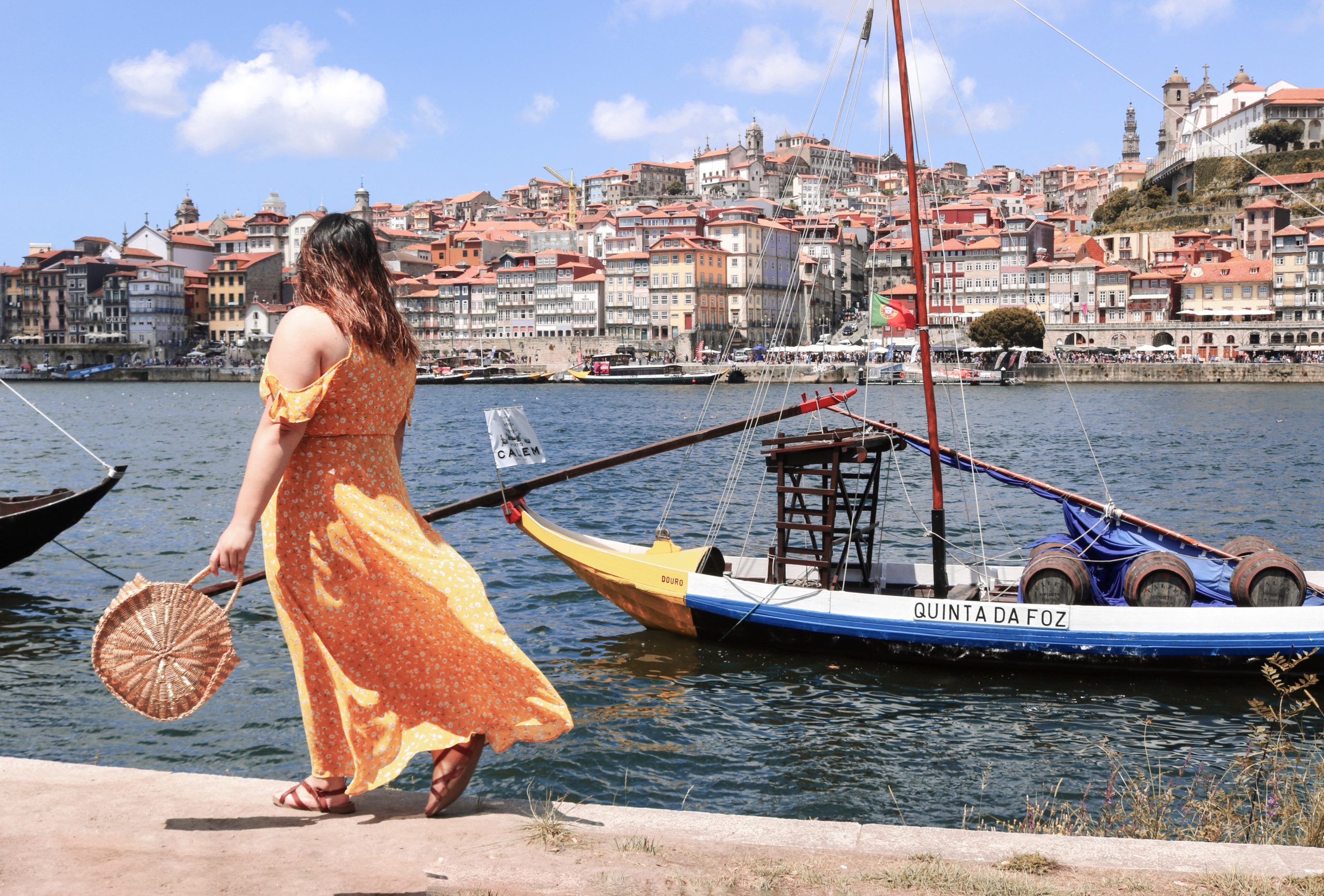
A Guide to Porto
I’ve added another city to my list of favorites around the world, and that city is Porto. Though I spent just under two days there, I fell in love with the city and already can’t wait to return someday. Because I was on such a time crunch, I had a list I was sticking to, as I wanted to see as much as I could. I thought that I wouldn’t have time to see much, but everything was actually closer than I thought. For this reason, I wanted to share with you all my guide to Porto, including where to find all the azulejos (ceramic tiles).
Getting There
Most people start off their Portuguese adventures in Lisbon, but because I was starting my trip from Spain and leaving from Portugal, it was easier for me to begin in Porto. There are many options to get to Porto from Spain, the fastest being to fly in. However, taking a train or bus are more budget friendly options. Of course, these take up more time and can take away from the time you have to explore the city. So, I opted for an overnight bus, to maximize the time I had in Porto. Trains and buses take around the same time, but trains are typically a bit more expensive, because they are slightly more comfortable and you also get the option to get private facilities like showers/bed (for an extra price, of course). Buses on the other hand don’t have all these options. For me, it wasn’t a big deal, since the buses do make rest stops throughout the night, so I went the bus route.
I found the Omio app to help me compare prices, as they include train, flight and bus options across different companies and departure points. Buses leave a couple of times a day from Madrid to Porto (and Lisbon). I took an overnight bus from Intercambiador de Buses- Avenida de Americas departure point. The trip, on the ALSA bus, took around 8 hours or so, reaching Porto at 6 AM, and cost just 34 euros ($40). The bus made a few stops over the night, for bathroom breaks and food stops (surprisingly, there were a few restaurants open late at night). Buses usually end at Casa da Musica, which is like the Intercambiador de Buses in Madrid. Trains usually stop at the Porto Campanha Railway Station, which is where I suggest anyone to get accommodation in Porto. Casa da Musica is just a short metro ride to Campanha, though, so it’s easy to get there even at 6 AM.
Accomodation
There’s plenty of accommodation options in the city center, but because I wasn’t planning on staying there for long, I chose to stay right across from the Campahna Station, as it would be convenient for me when I was heading out to Aveiro. Since I arrived very early in the morning, I wanted to find a place that was easy to access by foot (until I could figure out the transportation system). Hotel Poveira was perfect, as it was literally a 3 minute walk from the metro, and they allowed for early check in free of charge (this is dependent on room availability though). There are also a few cafes/ grocery shops right next door for breakfast options — the hotel also provides breakfast for just 3 euros. Hotel Poveira, which you can find on Booking.com, is a family run place for the past three decades, and while it’s not a super fancy place, they’re customer service is amazing! The staff was very helpful in helping me check in early, and the place is spotless and comfortable. The price is also very reasonable (39 euros), considering it’s right across from the train station. They also allow for baggage storage if you arrive early or leaving late.
Getting Around
Uber is common in many Portuguese cities, as well as the myTaxi app, which is now know as Free Now. If you want to learn how to travel like a local though, the metro is the best way to get around. The metro in Porto is not the same as in other European cities, that usually offer multi trip tickets for a cheaper price. In Porto, you pay per ride, and you can load how many rides you want on the metro card. Two rides were about 3 euros, but this of course depends on the zones you are traveling to (familiarize yourself with the zones in Porto, so you know more or less how much you will spend on the metro).
Prepare for the Walking
In two days, I only took the metro four times, and that’s because you can get to a lot of places by foot, if you don’t mind walking for 20 mins at a time. Of course, make sure to bring adequate shoes/ sandals appropriate for walking. Much of Porto’s streets, like other European cities, are all cobblestone. Also, as part of this guide of Porto, I must warn you you will have to go up and down a few hills. Not all the streets are steep, but it can be exhausting.
Foods to Try

My tour guide in Spain told me I need to try a francesinha, a typical sandwich that originated in Porto. A francesihna is a sandwich that contains wet-cured ham, linguiça, steak or roast meat and then covered in melted cheese and a hot, thick tomato/beer sauce. It’s super yummy, but beware, it’s filling! I had one for brunch and was good until dinner time. It’s a monster of a sandwich.

Another thing to try is the typical pasteis de nata — a typical Portuguese custard pastry. Of course, everyone gets them in Belem, which is just outside of Lisbon, but you can find very yummy ones in Porto as well. Rua da Santa Catarina, a street that is mainly for pedestrians only and is lined with tons of shops and restaurants, is the perfect place to find pasteis de nata. Across from the Zara there, you’ll find Fabrica da Nata, a typical bakery in Portugal. For just over one euro, you can get one pastel da nata with a small cup of coffee. The bakery also has plenty of seating space and lovely garden-themed decoration.

For part two of this Porto guide and to find all the best Instagram spots around Porto: Click below! https://mybucketlistjourneys.blog/category/photography/instagram-spots/




